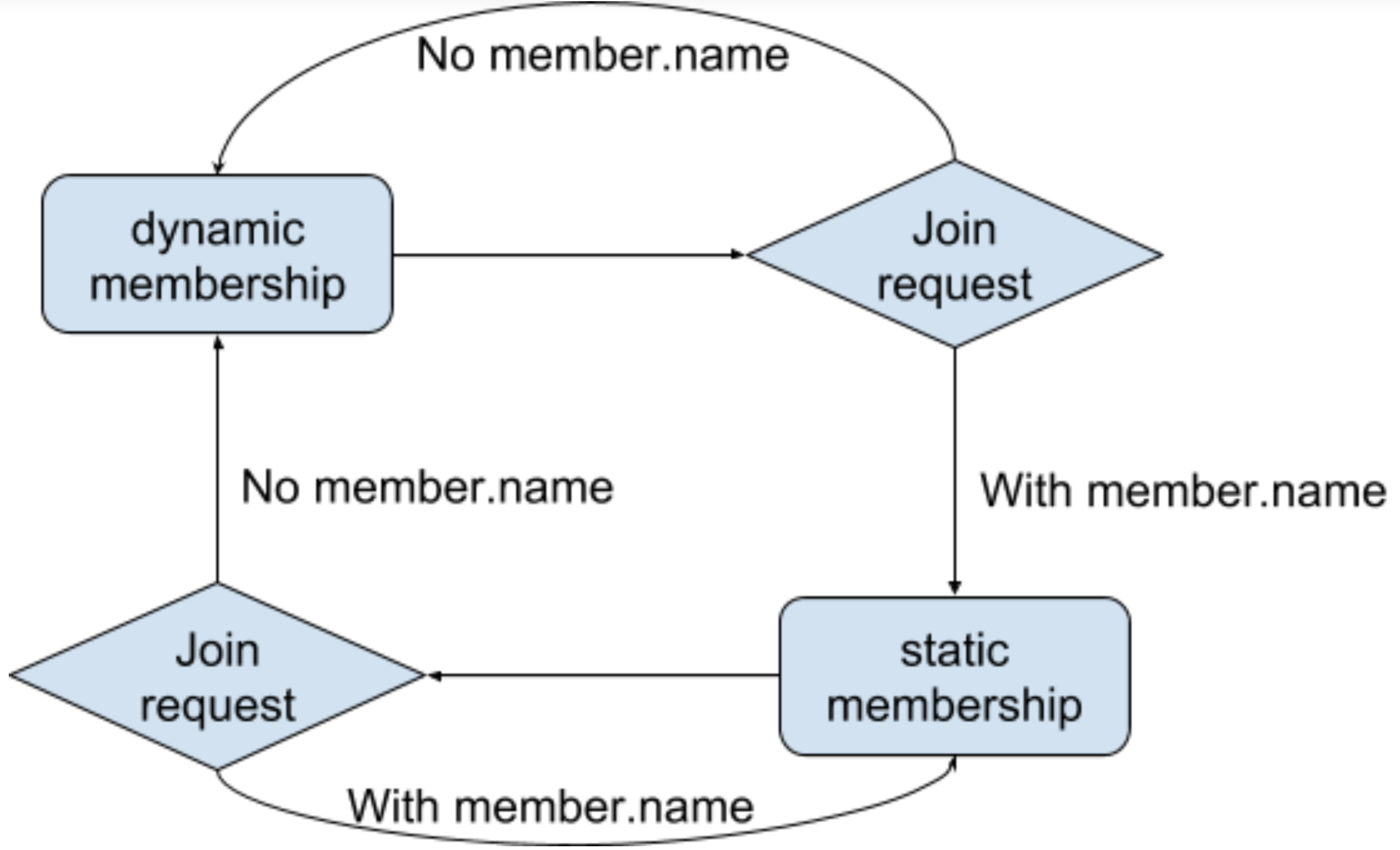...
Registration timeout is the timeout we will trigger rebalance when a member goes offline for too long. It should usually be set much larger than session timeout which is used to detect consumer health. It is monitored through heartbeat the same way as session timeout, and will replace the session timeout in a static membership. The reason we define a different config is because we would like easy switch between dynamic membership and static membership (See details here). By setting it to 15 ~ 30 minutes, we are loosening the track of static member progress, and transfer the member management to client application like K8. Of course, we should not wait forever for the member to back online simply for the purpose of reducing rebalances. Eventually the member will be kicked out of group and a final rebalance is triggered. Note that we are tracking the earliest offline member and compare with the registration timeout. Example below with registration timeout 15 min:
...
To make sure we could recover from broker failure/leader transition, an in-memory member name map is not enough. We will init another topic called `static_member_map` in the cluster and each time we have a stable state we should write the complete mapping information as a single message into it. This way when another broker takes over the leadership, we could transfer the mapping together.
Switch between static and dynamic membershipAnchor switch between switch between
| switch between | |
| switch between |
For the very first version, we hope to make transferring logic simple enough. As we have mentioned, the goal of static membership is to reduce multiple rebalances with intermittent failures. There should be an easy way to fallback to dynamic membership when user prefers to let broker handle task assignments, for example liveness becomes a more important factor when the state tuning has big progress. The fallback is simple: when the membership becomes stable, the first join group request will decide the membership protocol for next round. For example, when we are running stable with static membership, deploy a new change to the client app without member.name being set could invalidate the current hashmap on broker, and all the v4 request containing member.name will be treated as a normal dynamic member and perform the sticky assignment in dynamic context as usual. While we keep adding the static member into the group, the behavior will not change, when we shall wait until expansion.timeout to perform the rebalance. Note that we intentionally separate session.timeout and registration.timeout so user doesn't have to change any setting except member name, although they are serving the same purpose in different protocols.
Compatibility, Deprecation, and Migration Plan
...
